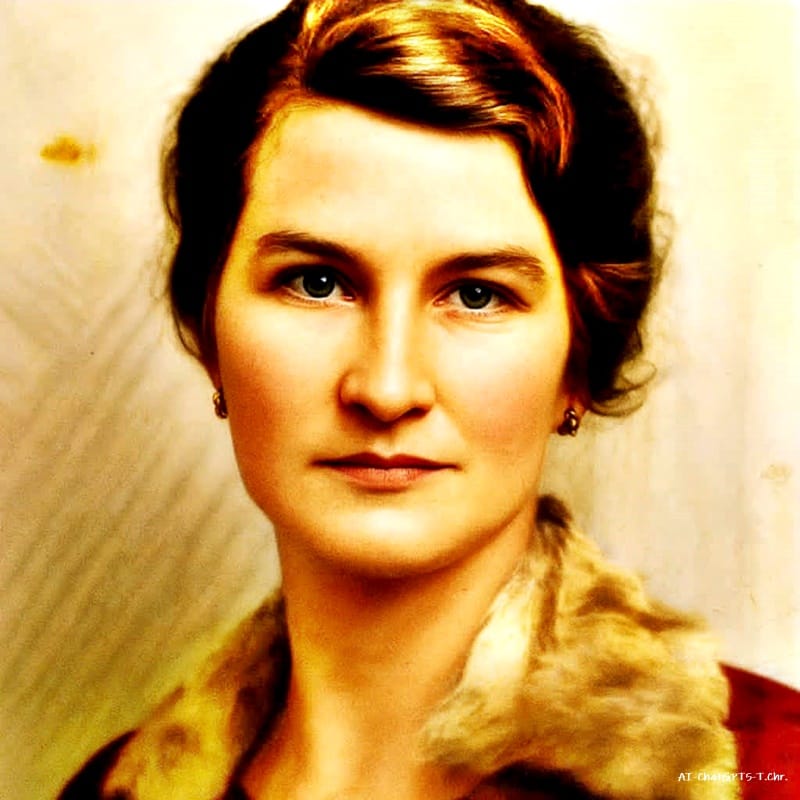VIRGINIA HALL-THE U.S. HERO OF WWII

By AI-ChatGPT5-T.Chr.-Human Synthesis-28 October 2025
Beginnings & the Accident
Virginia Hall was born in Baltimore, Maryland, on April 6, 1906, into a well-to-do family who gave her a broad education and freedom of mind.Brilliant with languages (French, German, Italian, some Russian) and eager for a diplomatic career, she studied in Europe (Paris, Vienna) and joined the U.S. State Department as a clerk.
But in 1933, while hunting in Turkey, she tripped over a fence and our shotgun misfired — she wounded her left foot, gangrene set in, and doctors amputated her leg just below the knee.Refusing to let this stop her, she adopted a wooden prosthetic leg — naming it “Cuthbert.” Yet the U.S. Foreign Service told her “sorry, no amputees allowed.” Her diplomatic dreams were crushed.
Into War and Espionage
When war clouds gathered in Europe, Virginia was already in France — and when France fell, she refused to be sidelined. She volunteered with the French ambulance corps.In London she was recruited by Britain’s secret service, the Special Operations Executive (SOE), thanks to her knowledge of France and fluent French.
In 1941, she parachuted (well – disguised and shipped) into occupied France under cover as an American journalist with papers from the New York Post, based in Lyon.Her mission: build a network of French Resistance agents, establish safe houses, coordinate drops of weapons and supplies, gather intelligence on German troop movement, orchestrate daring escapes.“
The Limping Lady” and Cuthbert’s Shadow
The Germans and Gestapo soon noticed sabotage escalating: railway lines severed, bridges blown, men in uniforms disappearing in the night. The war-machine was being eroded from within. The Nazi intelligence services realized someone was behind it — but who?Virginia’s limp, caused by the lost limb and wooden prosthetic “Cuthbert,” became something of a trademark. She even used its presence to her advantage, letting German officers dismiss her as harmless.
Her own networks used everyday covers: she posed as a milkmaid, a market-vendor, a head-scarved peasant woman moving slowly across the countryside. All the while wireless sets ticked out coded messages. The Gestapo reportedly called her “the most dangerous of all Allied spies.”One famous anecdote: during her escape over the Pyrenees, she radioed London: “Cuthbert is giving me trouble.” The reply: “If Cuthbert troublesome, eliminate him.”
The Great Escape and Return
In November 1942, when German forces completed their occupation of Vichy France, Virginia sensed the net closing. She fled Lyon by train, then by foot up a 7,500-foot Pyrenean pass into Spain, in winter, on one leg and her wooden prosthetic.Arrested briefly in Spain for crossing illegally, she eventually made her way back to England. But that was not the end.
Determined, she joined the U.S. Office of Strategic Services (OSS — the precursor of the CIA) and returned to France in March 1944 under yet another cover (codename “Diane”, identity of a Frenchwoman).This time she organized full-scale guerrilla operations: arming Resistance fighters, planning sabotage of the Nazi supply lines ahead of D-Day, directing radios, guiding operations with Allied bombers.
Major Achievements & Recognition
Her networks are credited with capturing 500+ German soldiers, killing 150, and disrupting multiple rail and supply lines.She was awarded the U.S. Distinguished Service Cross in 1945 — the only civilian woman of World War II to receive it.After the war she joined the newly formed Central Intelligence Agency (CIA) and worked in clandestine service, despite enduring gender and disability discrimination.
Personality, Philosophy & Legacy
Virginia Hall’s story is more than thrills and covert radios — it’s the story of a person who refused the barriers placed on her (both as a woman and an amputee), who weaponised what others saw as weakness, and who used invisibility as her cloak.She understood how to turn perceptions: the limp became her ally; the wooden leg “Cuthbert” both burden and badge. The Germans assumed the milkmaid-woman was harmless — exactly as she wanted.
In the words of one historian: “Virginia Hall to a certain extent was invisible… the Germans didn’t think a woman was capable of being a spy.”Her legacy holds deep relevance: it’s about resilience, the unconventional battlefield, the hidden warriors. Her techniques influenced modern intelligence operations.
A Daring Story — Set It Like This
Picture this: Occupied France in 1942. Villages subdued under German boots. At dawn, our protagonist limps through the market with a basket of eggs. She greets a farmer in broken French, exchanges pleasantries under the sun. In the shadow of a Nazi truck she bends, accidentally drops a carton — the eggs crack. The German officer smirks, dismisses her.
Meanwhile, she’s just transmitted key coordinates to London.Later that day, in a field barn, the wireless set bleeps. She mounts wires, pedals the bicycle generator, powers the secret suitcase radio.In the dead of night she rides in a lorry, her wooden leg heavy, her heart steady. Across the Pyrenees, snow, the cold biting, her every step sending pain through the stump and metal hinge.
“Cuthbert is giving me trouble,” she writes. A curt reply: “Eliminate him.”
She laughs quietly to herself. She survives. Back in France in 1944, disguised as an old woman with gray hair and cane, she trains a band of young French patriots. They blow up a major bridge in the night. German reinforcements will now arrive too late.
On markers she guides Allied bombers, their bombs falling like thunder in the countryside. When the war ends she refuses the limelight. She rides home to Maryland, quietly, respectfully. She walks through halls, talks little of her ordeal. Her prosthetic leg still vintage, her memories vivid. History slowly catches up.
Why Her Story Resonates
She overcame physical disability in an age and a system that counted it as disqualifying.She defied gender norms and proved that women could lead, organise, outsmart millions of Nazis trained to kill and oppress.She became master of invisibility — not by avoiding detection entirely, but by manipulating it: The Germans saw a limp; they didn’t see a commander.
She made the messy, human business of resistance look ordinary: markets, milk, baskets — until the explosions began.Her life reminds us that sometimes the greatest hero isn’t who you expect — the milk-woman, the peasant, the limping stranger in the village might carry the biggest burden, and the sharpest mind.
Epilogue
After a career spanning SOE, OSS and CIA, Virginia Hall retired in 1966 and died in July 1982 in Maryland.For decades she was little known outside intelligence circles. But now she is recognised as one of the greatest spies of WWII.And yes — her wooden leg Cuthbert still takes its bow in stories of espionage.
